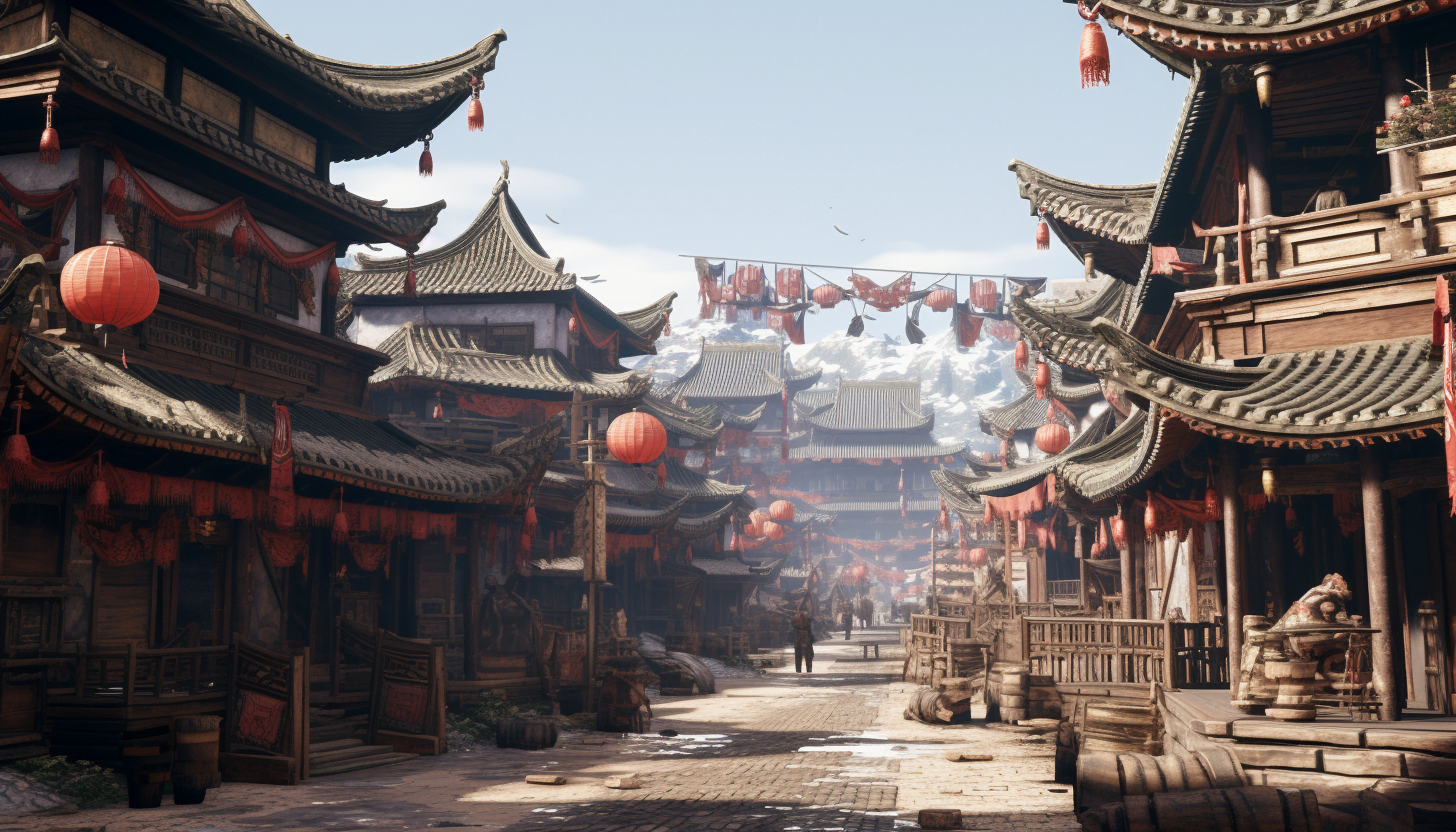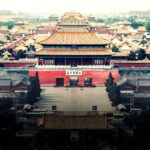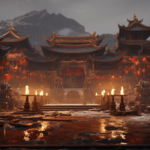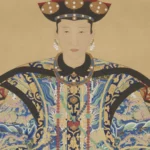The Han Dynasty, spanning from 206 BCE to 220 CE, was a pivotal period in Chinese history known for its wealth, advancements, and rich cultural heritage. One of the most fascinating aspects of this era is the wide array of artifacts that have been unearthed from Han Dynasty tombs. These artifacts offer a glimpse into the lives, beliefs, and traditions of the people who lived during this time. In this article, we will explore ten remarkable Han Dynasty artifacts, shedding light on their significance and the stories they tell.
Explore Related Content:
- If you’re fascinated by Han Dynasty artifacts, delve into the mesmerizing world of Han Dynasty Art Styles to discover the artistic evolution of this era.
1. Unearthing Han Tombs: Riches of the Past
Han Dynasty tombs serve as time capsules, preserving invaluable artifacts and providing insight into ancient Chinese culture. Through careful excavation and preservation, archaeologists have uncovered a treasure trove of items that were buried with the deceased, shedding light on their beliefs, customs, and daily lives.
2. Exhibition Highlights: Showcasing the Best of Han Dynasty Artifacts
Museum exhibitions featuring Han Dynasty artifacts allow the public to experience the beauty and historical significance of these treasures firsthand. Museums worldwide curate exhibitions that showcase the craftsmanship, artistry, and cultural value of these artifacts, providing a platform for education and appreciation of the Han Dynasty’s contribution to human civilization.
3. Ritual Bell Set: Harmonious Melodies from the Past
The ritual bell set is a prime example of the exquisite artistry and spiritual significance of Han Dynasty artifacts. These bell sets were crucial components of ceremonial rituals, producing harmonious melodies believed to connect the earthly and celestial realms. The intricate craftsmanship and symbolic motifs featured in these bell sets provide valuable insights into the religious and cultural beliefs of the time.
4. Wine Thief: Toasting to Han Dynasty’s Indulgence
The wine thief, a unique Han Dynasty artifact, reflects the lavish lifestyle and appreciation for wine during this period. Used for sampling wine from large vessels, the wine thief exemplifies the Han Dynasty’s indulgence and the importance of winemaking in social gatherings. Exploring this artifact provides a glimpse into the customs and practices surrounding wine culture in ancient China.
5. Dancing Figure: A Captivating Expression of Han Dynasty Art
Dancing figures are mesmerizing Han Dynasty artifacts that showcase the artistic beauty and cultural significance of dance during this period. These figurines capture the elegance and grace of dancers, portraying intricate movements and costumes. Studying these artifacts allows us to appreciate the artistic expressions and delicate craftsmanship that flourished during the Han Dynasty.
6. Drinking Set for Two People: Togetherness and Intimacy in Han Dynasty
The drinking set for two people exemplifies the importance of togetherness and intimate connections in Han Dynasty society. This artifact showcases the intricately designed vessels and cups that were used in shared drinking rituals, emphasizing the significance of interpersonal relationships and social interactions. Understanding this artifact adds depth to our understanding of the Han Dynasty’s interpersonal dynamics.
7. Jade Coffin: A Final Resting Place of Eternity
Jade coffins hold a special place among Han Dynasty artifacts due to their association with eternal rest and cultural beliefs. Jade was highly revered as a symbol of immortality, and these coffins were crafted with meticulous detail and artistry. Delving into the significance of jade and its role in ancient Chinese burial rituals provides a unique perspective on the Han Dynasty’s spiritual and cultural practices.
8. Jade Suit: Armor for the Afterlife
Jade suits are remarkable Han Dynasty artifacts that were designed to accompany the deceased into the afterlife. These suits were made from thousands of intricately interlinked jade pieces, serving as a symbol of protection and immortality. Exploring the craftsmanship and cultural beliefs associated with jade suits deepens our understanding of the Han Dynasty’s perception of the afterlife and the importance of jade as a sacred material.
9. Soldier Figurines: Guardians of the Han Dynasty
Soldier figurines are fascinating Han Dynasty artifacts that provide glimpses into the military might and organizational structure of this era. These intricate clay figurines depict soldiers with various weapons and armor, offering valuable insights into ancient warfare and combat strategies. Analyzing these artifacts enhances our understanding of the Han Dynasty’s military prowess and the cultural values placed on defense and protection.
10. Divination Board: Seeking Answers from the Spiritual Realm
Divination boards hold significant cultural and spiritual importance in the context of the Han Dynasty. These artifacts were tools used to seek answers from the spiritual realm, reflecting the people’s belief in divination and their relentless pursuit of knowledge. Exploring the design, function, and cultural context of divination boards sheds light on the Han Dynasty’s spiritual beliefs and the significance of divination in their daily lives.
Exploring the Exquisite Relics from the Han Dynasty
[youtube v=”KimoSEdMmao”]
In the Shanxi Museum in northern China’s Shanxi province, a popular exhibition is taking place that showcases over 270 pieces of cultural relics from the Han Dynasty. This era, known for its rapid development in social, economic, and cultural aspects, holds great importance in Chinese history. In this article section, we will take a closer look at some of the most interesting and significant exhibits from this exhibition.
The first unit of the exhibition focuses on the Western Han Dynasty and its governing system. The exhibit features cultural relics excavated from the city of Suzhou, particularly official stamps. These stamps were made of different materials, such as jade, silver, or bronze, depending on the social class and rank of the owner. By examining the carvings on these stamps, experts can determine the positions and statuses of individuals during that time.
Moving on to the second unit, it delves into the daily life and funeral rituals of the Han Dynasty. Jade ware, pottery ware, and bronze wares are on display, giving us insights into the society and economy of that period. Additionally, bronze coins and portrait figurines emphasize the luxurious and fashionable burial practices of the Han Dynasty. The various cooking vessels and containers reveal the importance placed on food and dining, resembling modern-day buffets.
The third unit highlights the military aspect of the Han Dynasty. Iron armor, swords made of bronze or iron, and multifunctional weapons showcase the military prowess and strategic capabilities of this era. Small-sized terracotta warriors, unlike the life-sized ones from the Qin Dynasty, provide a glimpse into the artistic styles of these two dynasties. These warrior figurines were excavated from the tomb of an emperor, displaying the military might of the rulers.
Finally, the last unit centers around jade wares as funeral objects. Jade holds great significance in Chinese culture, symbolizing purity, excellence, and harmony. Today, young Chinese girls still appreciate and wear jade ornaments, emphasizing the enduring legacy of jade in Chinese society. A remarkable jade suit, specially made for an emperor, serves as a testament to their high social status.
Overall, this exhibition offers a remarkable glimpse into the life, culture, and military achievements of the Han Dynasty. The Han Dynasty’s legacy continues to influence Chinese society, showcasing their pursuit of comfort, romance, and excellence. The artifacts displayed in this exhibition remind us of the rich history and cultural heritage of China, allowing us to appreciate their past achievements and contributions.
Conclusion
In conclusion, the Han Dynasty artifacts unearthed from tombs provide us with a precious window into ancient Chinese culture, beliefs, and artistic expressions. From the ritual bell sets and wine thieves to dancing figures and soldier figurines, each artifact carries its unique story and significance. Studying these artifacts not only deepens our knowledge of history but also allows us to appreciate the ingenuity, craftsmanship, and beauty of the Han Dynasty.












